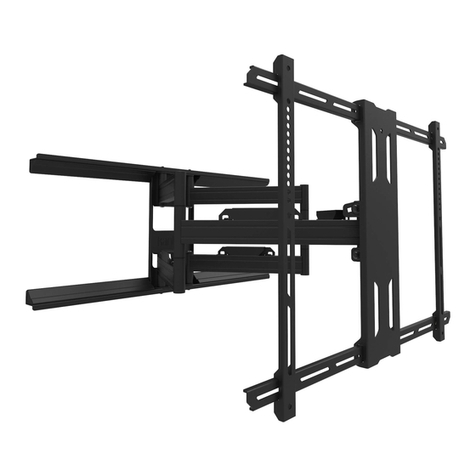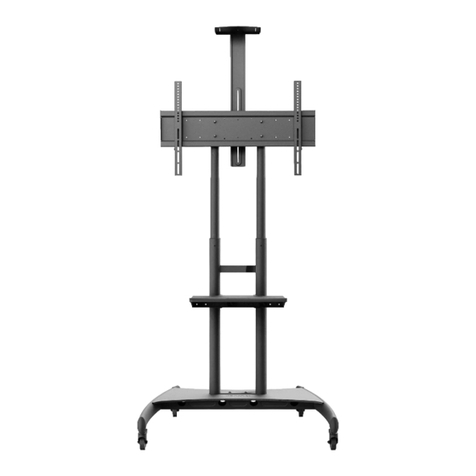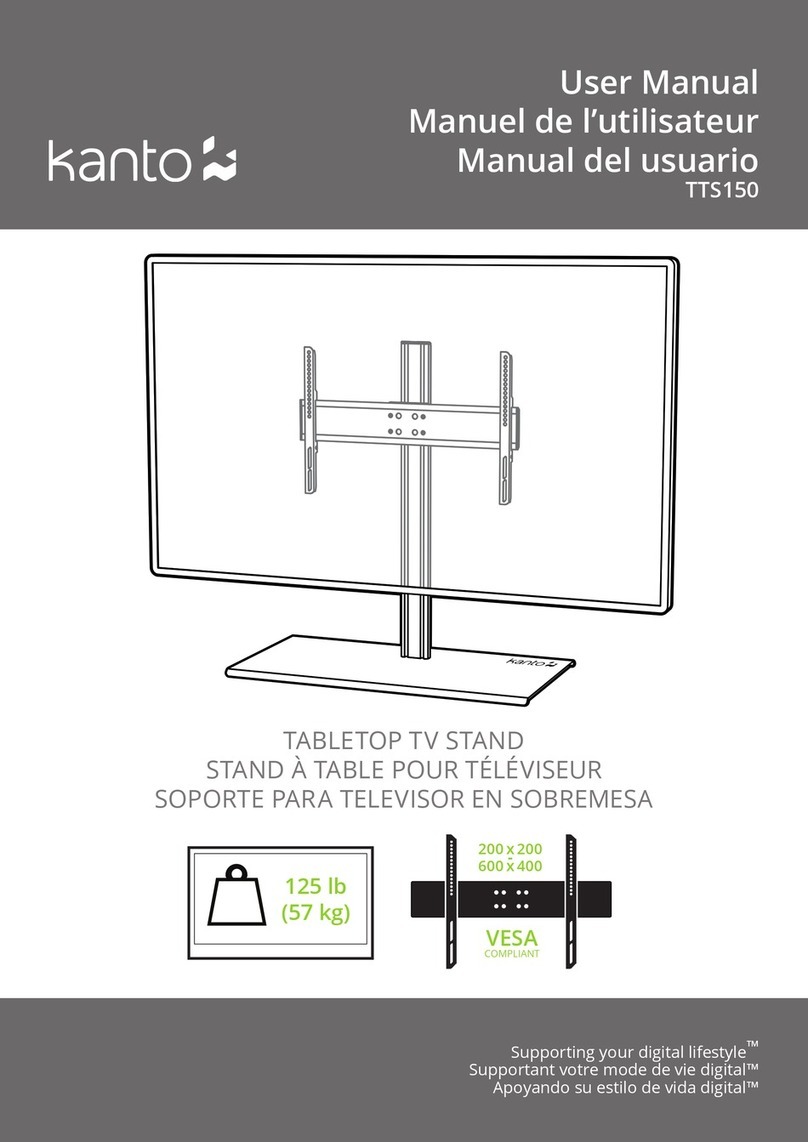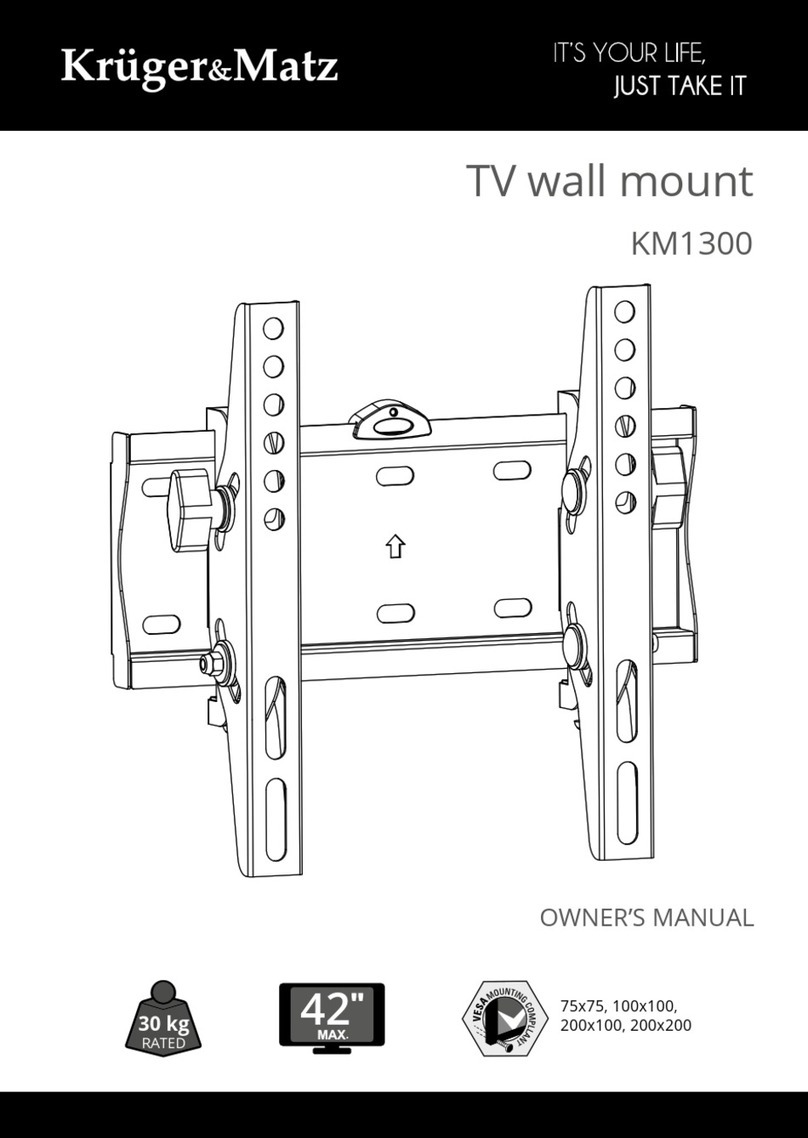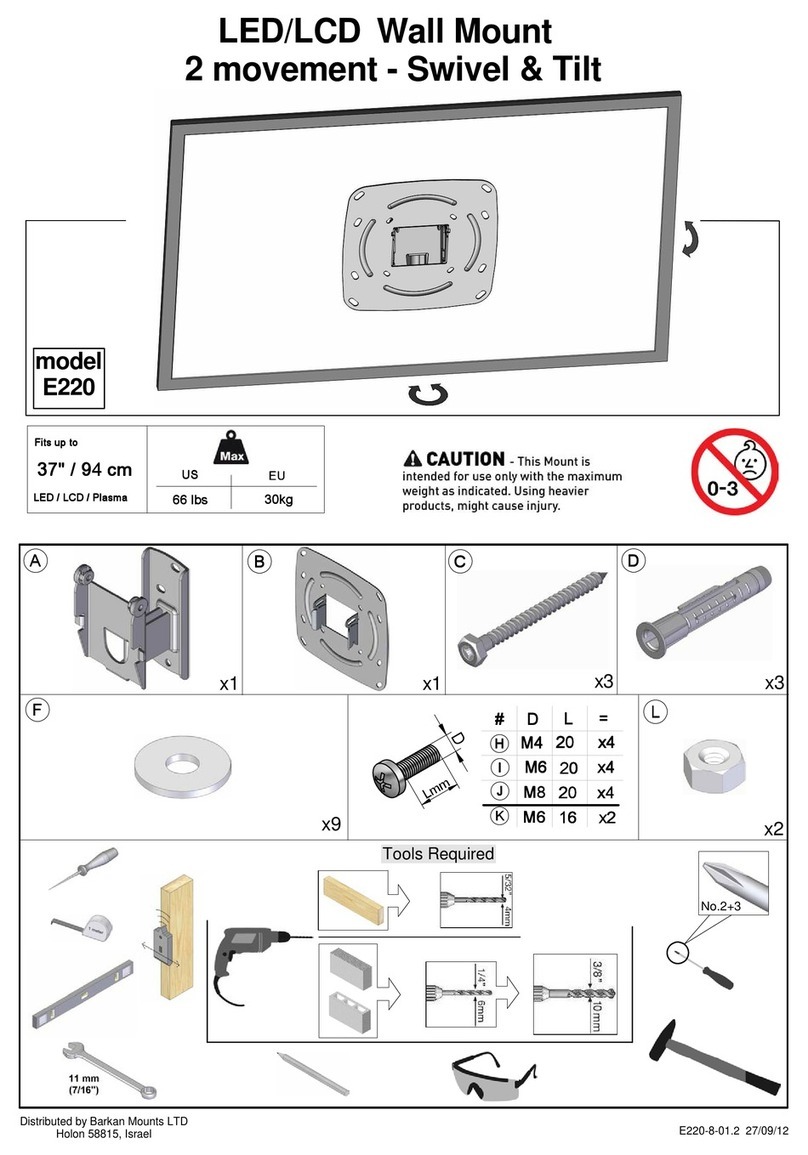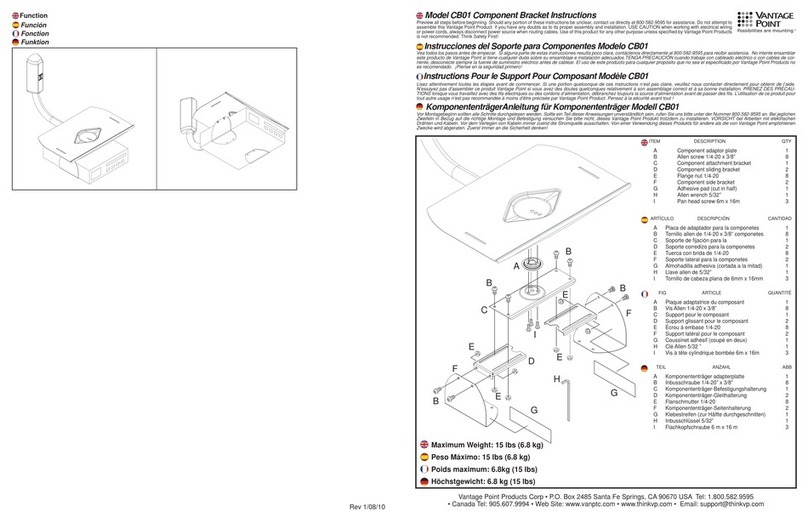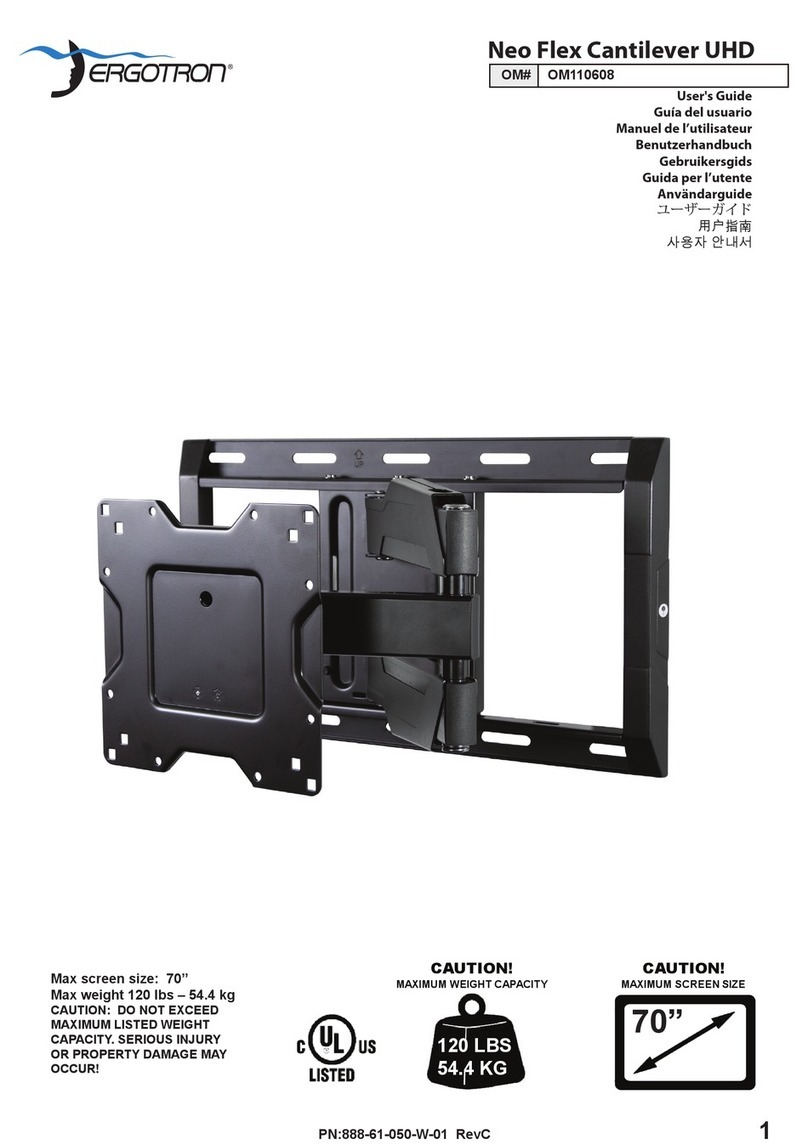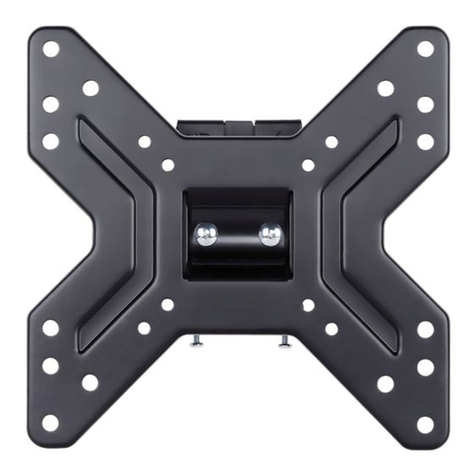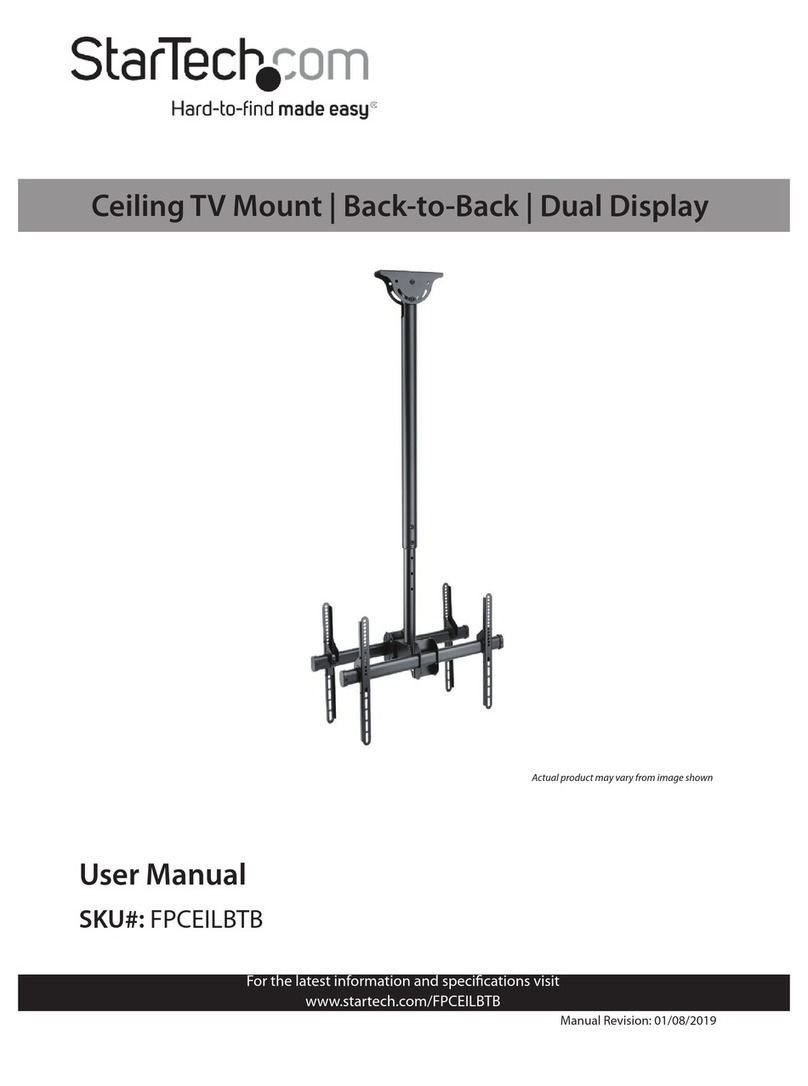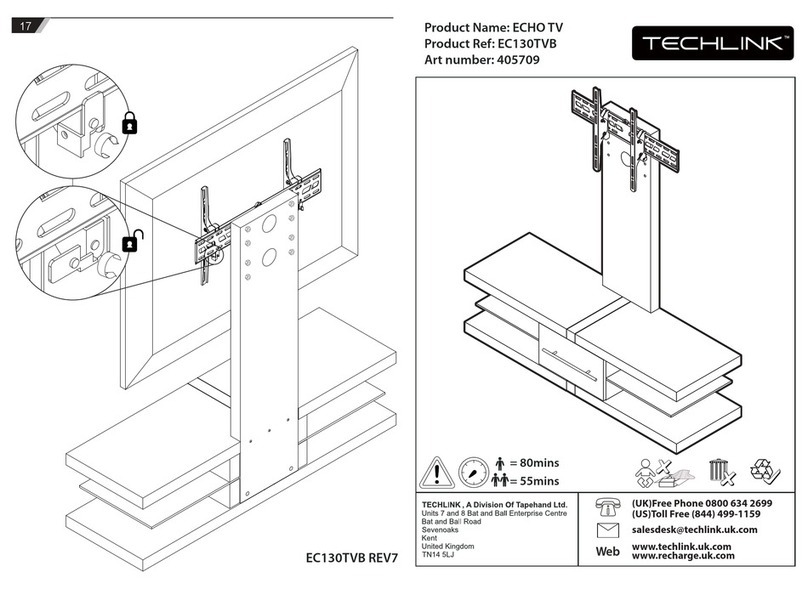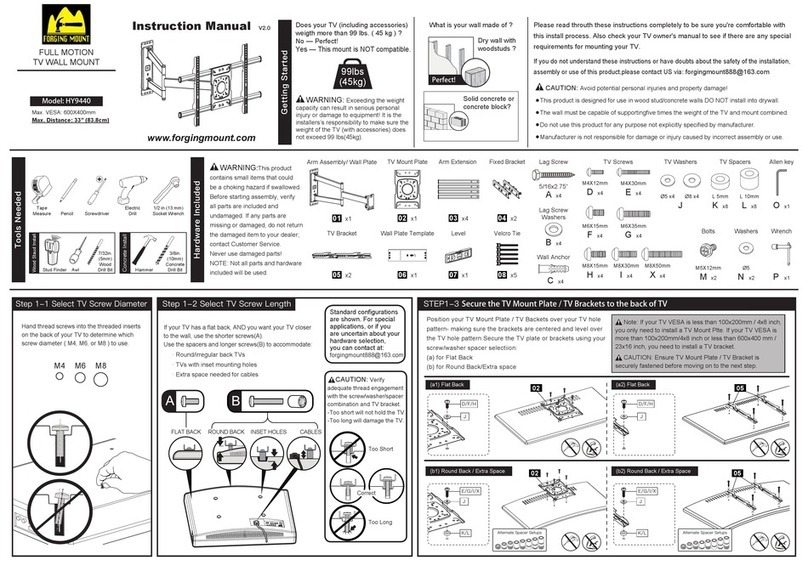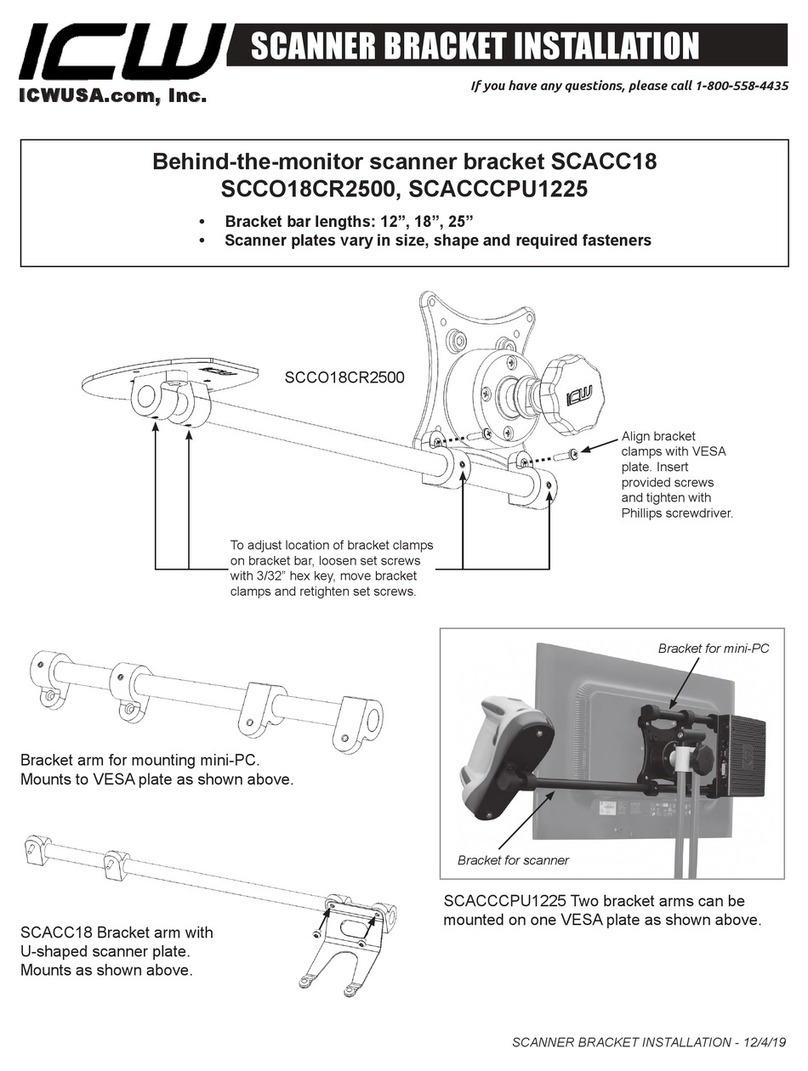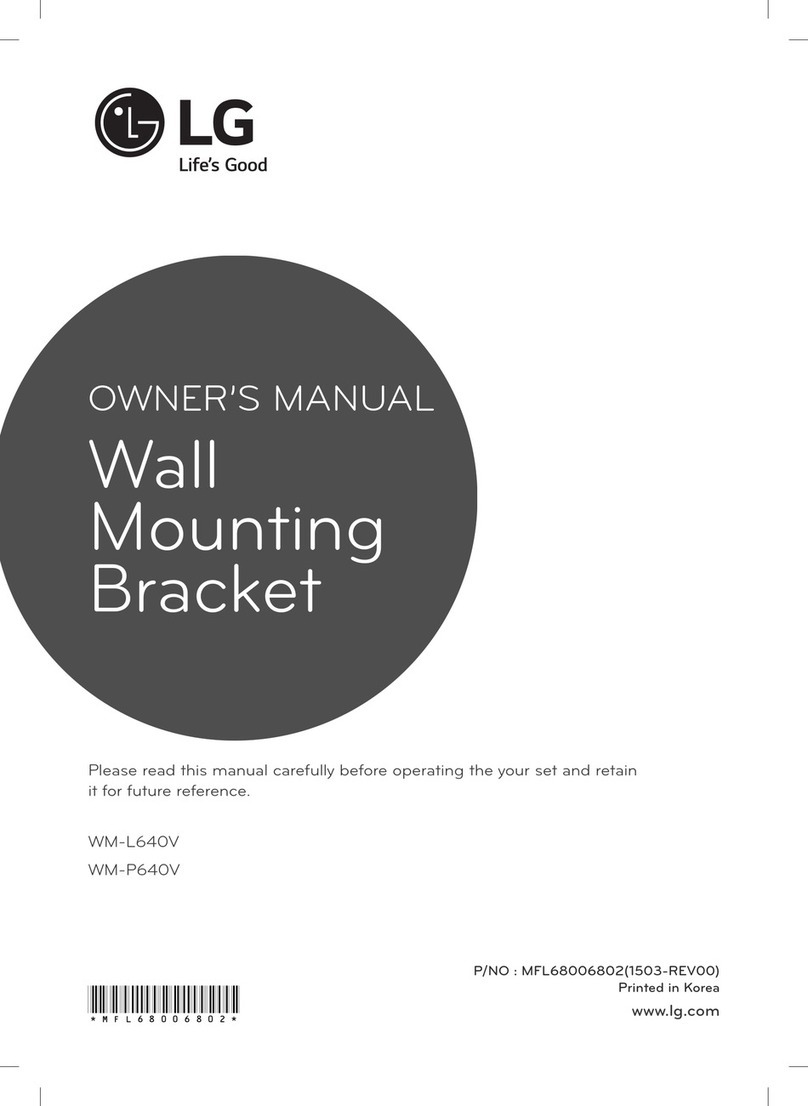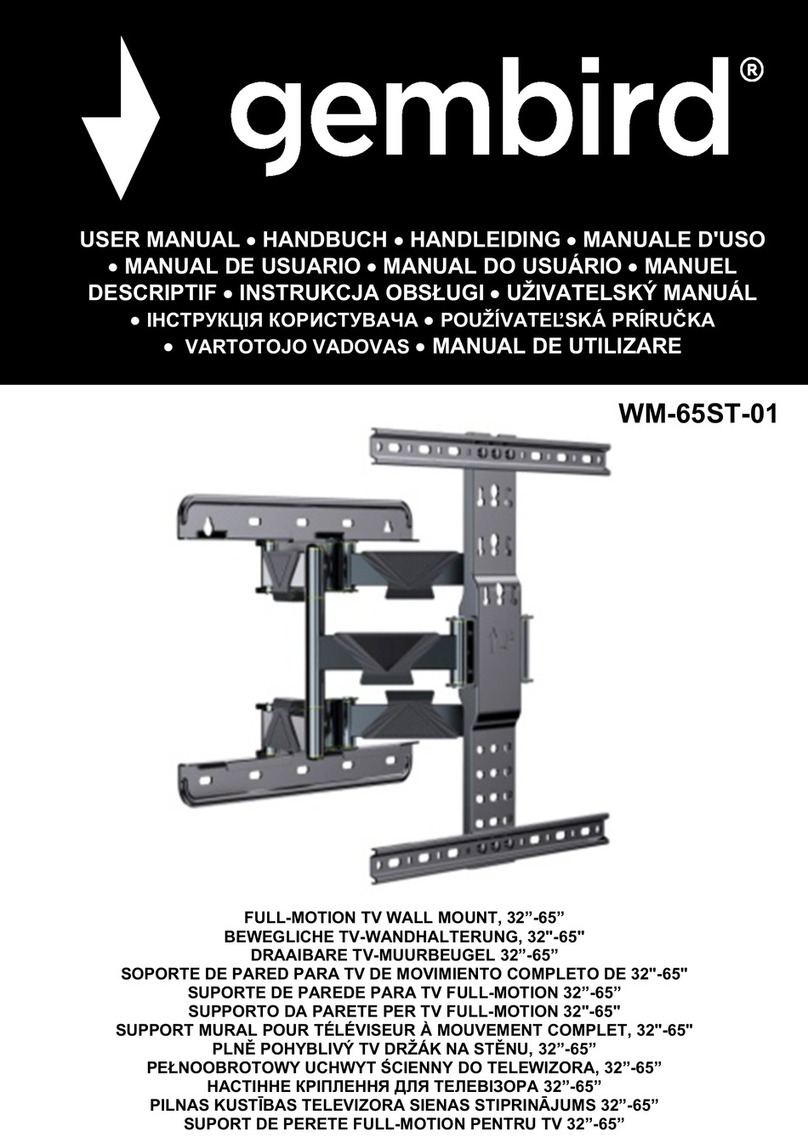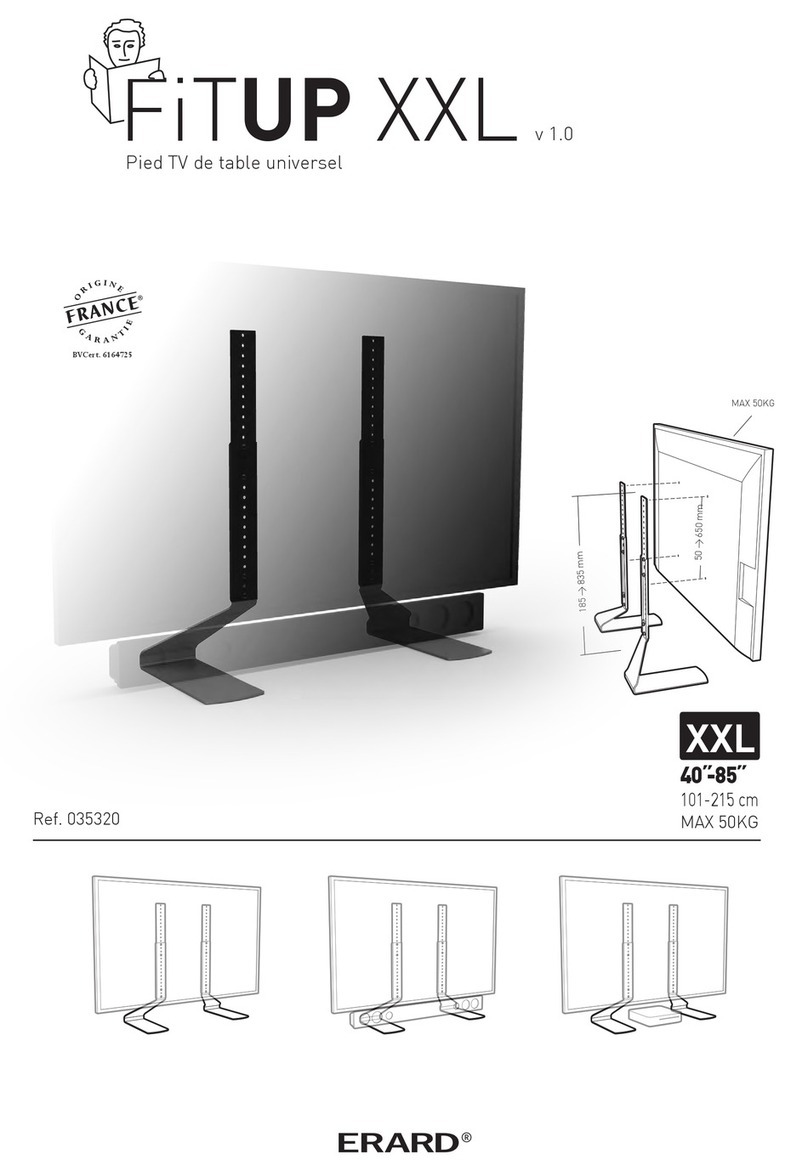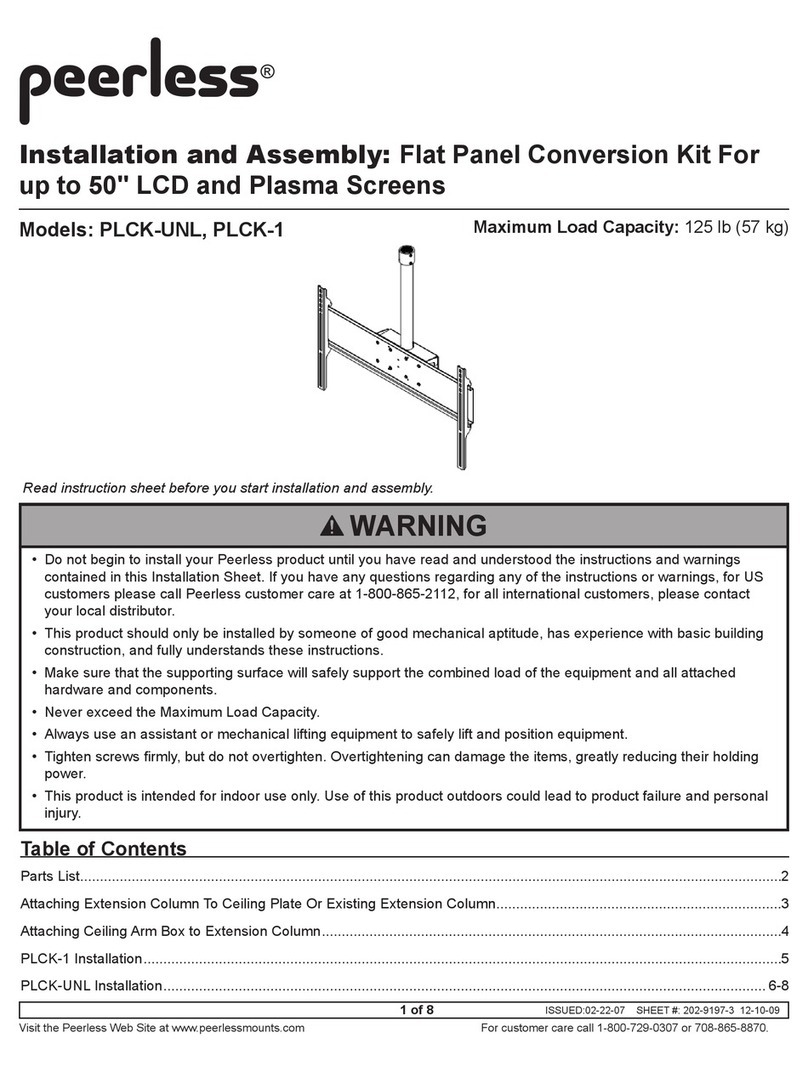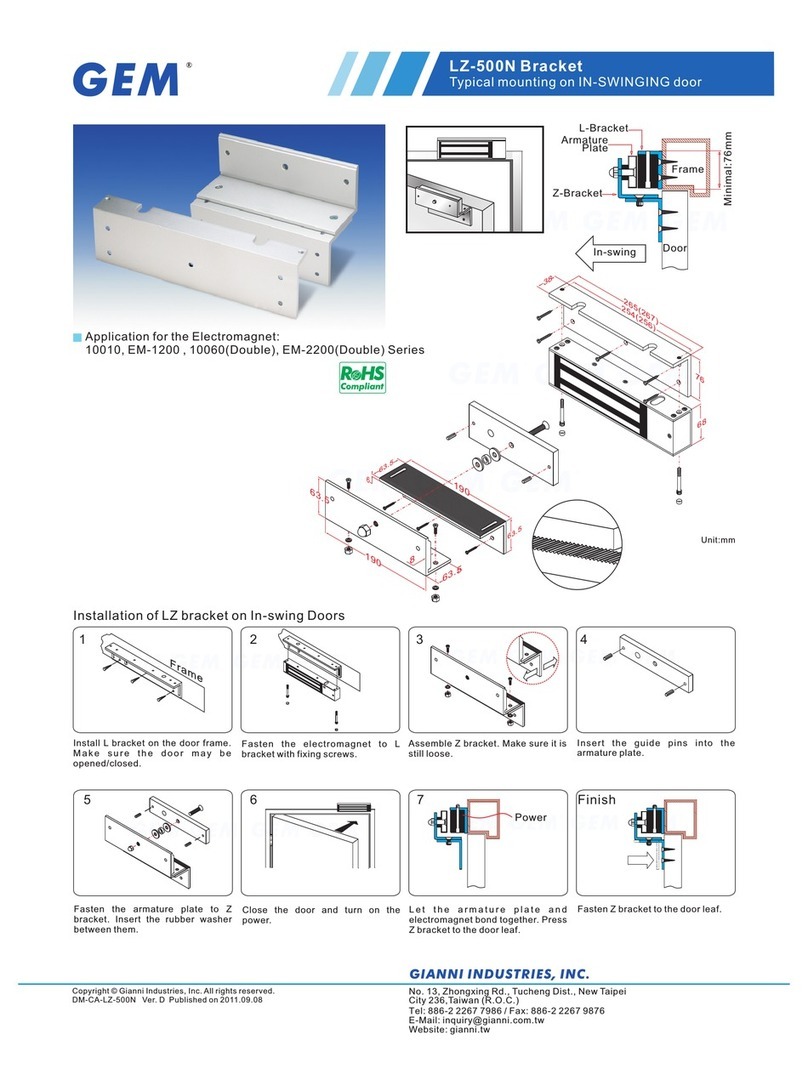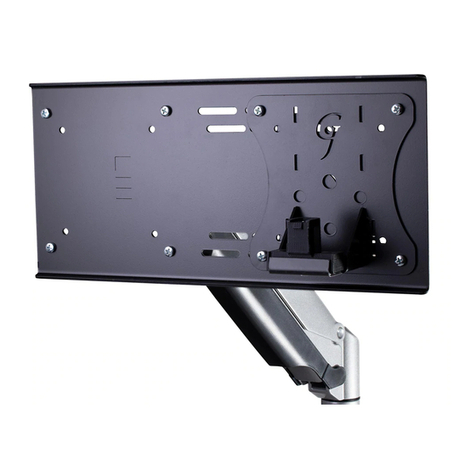Supporting your digital lifestyle™Supporting your digital lifestyle™
5
Step 2: Mount Wall Plate
Wood Stud Wall
Verify where the center of the stud is by using a stud
finder. At the desired height, drill the Wall Plate pilot
holes perpendicular to the wall (see Diagram B).
Attach the Wall Plate using 2 Lag Bolts (M) and Lag Bolt
Washers (J) (see Diagram B). Make sure the Wall Plate
is flat against the wall surface. Do not over tighten
Lag Bolts (M). Snap on End Caps (T).
Brick or Concrete Wall
Drill the hole perpendicular to the wall using a masonry
bit (see Diagram C). Do not drill into mortar joints.
Insert a Concrete Anchor (N) into each of the holes flush
with the concrete wall surface and not flush with the
surface covering, such as drywall.
Attach the Wall Plate using 2 Lag Bolts (M) and Lag Bolt
Washers (J) (see Diagram C). Make sure the Wall Plate
is flat against the wall surface. Do not over tighten
Lag Bolts (M). Snap on End Caps (T).
CAUTION
Make sure the supporting surface will support
the load limits outlined in the Caution at bottom
of page two. Tighten Lag Bolts until the Wall Plate is
snug flat against the wall. Do not over tighten Lag Bolts
(M). Each Lag Bolt must be located in the center of a
wood stud.
CAUTION
Make sure the concrete or brick wall is at least
3.5” thick. Make sure the anchor is seated completely
flush with the concrete surface even if there is another
layer of material, such as drywall. If drywall is over 5/8”
thick custom lag bolts must be used. Concrete must be
a minimum of 2000psi in density.
Please note: The M500 provides minor vertical level
adjustment. The bottom lag bolt can be tightened last
allowing for slight left and right adjustment.
Diagram B Diagram C
Wood Concrete 3.5” (89 mm)
9/16”
(14mm)
(N)
(T)(T)
(M)(M)
(J)(J)
2” (50mm)
3/8”
(9.5 mm)
3/16”
(5mm)
3” (75 mm)






